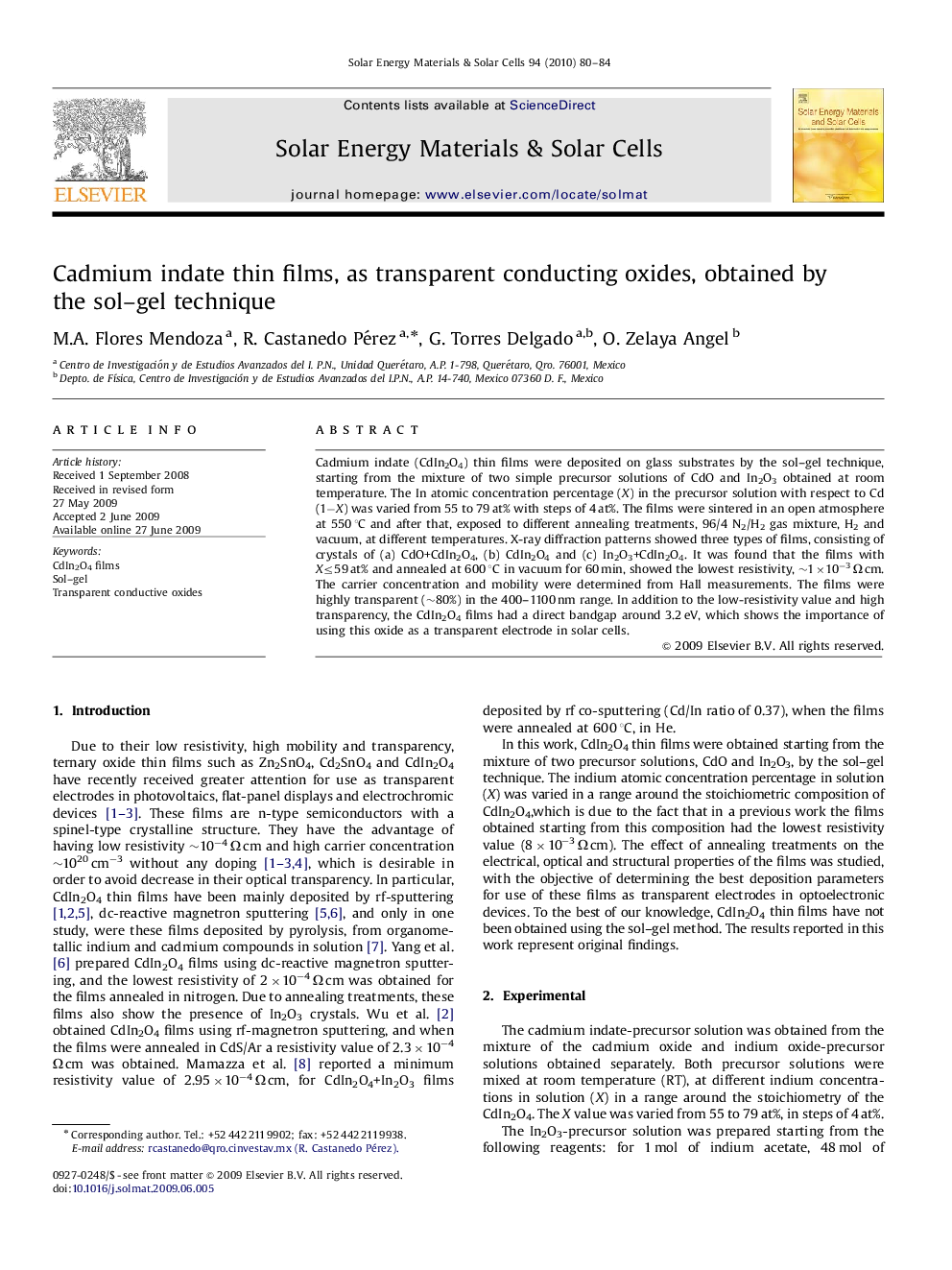| Article ID | Journal | Published Year | Pages | File Type |
|---|---|---|---|---|
| 79606 | Solar Energy Materials and Solar Cells | 2010 | 5 Pages |
Cadmium indate (CdIn2O4) thin films were deposited on glass substrates by the sol–gel technique, starting from the mixture of two simple precursor solutions of CdO and In2O3 obtained at room temperature. The In atomic concentration percentage (X) in the precursor solution with respect to Cd (1−X) was varied from 55 to 79 at% with steps of 4 at%. The films were sintered in an open atmosphere at 550 °C and after that, exposed to different annealing treatments, 96/4 N2/H2 gas mixture, H2 and vacuum, at different temperatures. X-ray diffraction patterns showed three types of films, consisting of crystals of (a) CdO+CdIn2O4, (b) CdIn2O4 and (c) In2O3+CdIn2O4. It was found that the films with X≤59 at% and annealed at 600 °C in vacuum for 60 min, showed the lowest resistivity, ∼1×10−3 Ω cm. The carrier concentration and mobility were determined from Hall measurements. The films were highly transparent (∼80%) in the 400–1100 nm range. In addition to the low-resistivity value and high transparency, the CdIn2O4 films had a direct bandgap around 3.2 eV, which shows the importance of using this oxide as a transparent electrode in solar cells.
